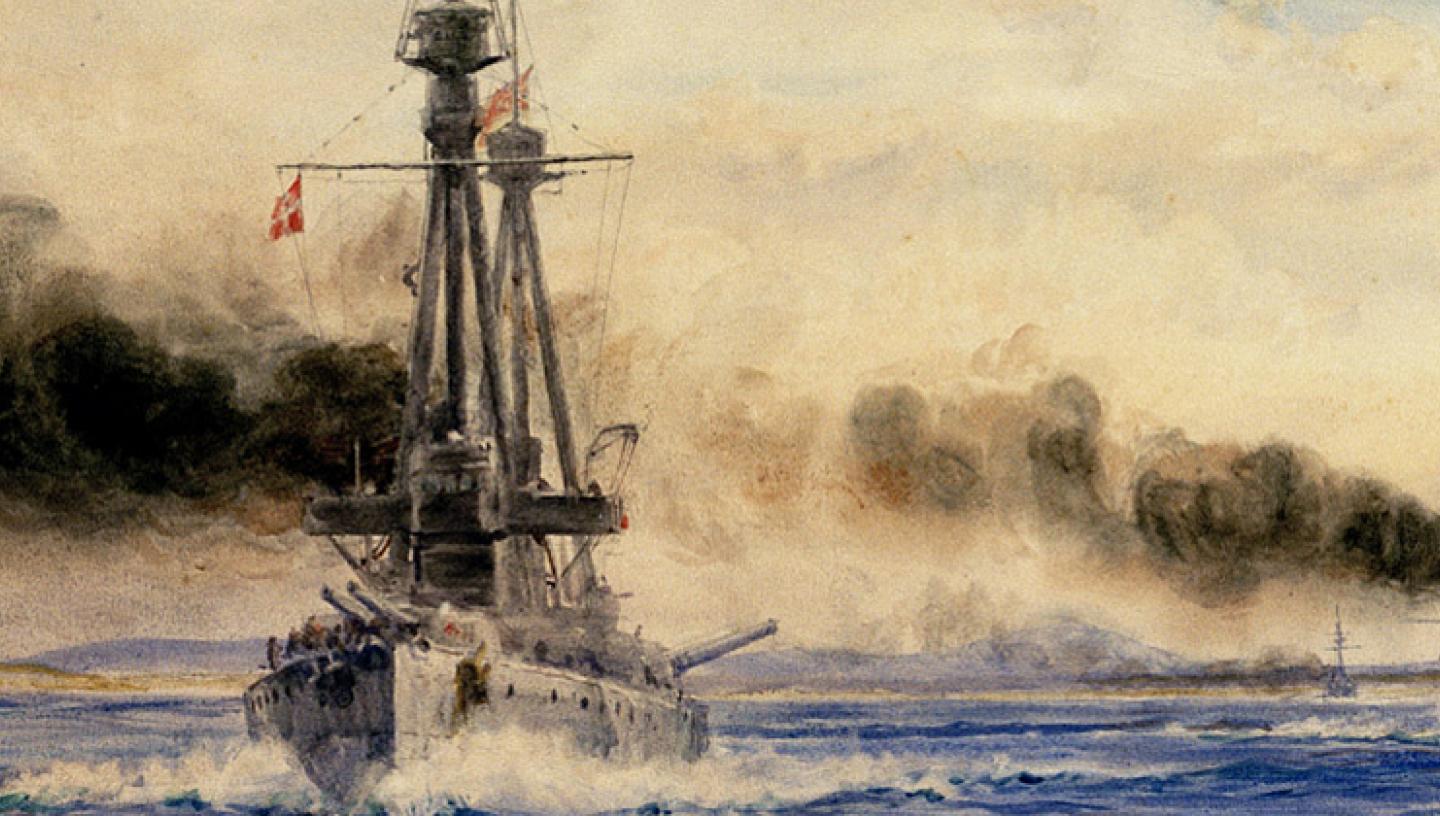
Essential Information
| Location |
National Maritime Museum
|
|---|---|
08 Dec 2014
December marked the centenary of the Battle of the Falkland Islands. A short and brutal battle in which four German warships were sunk with little cost to the British. Curator of Naval History, Quintin Colville, looks at the events leading up to the day and the story of German Admiral Maximilian von Spee.
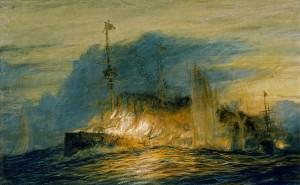
The British flagship, HMS Good Hope, ablaze during the Battle of Coronel, watercolour by W. L. Wyllie, c. 1915. (PAF 1790)
The first months of the Great War saw powerful German warships on the loose around the globe. By the end of October, Royal Naval warships had bottled up the Königsberg in an East African river delta. On 9 November, HMAS Sydney of the Royal Australian Navy forced the Emden to beach itself on the Cocos Islands in the Indian Ocean. However, the first major naval clash in distant waters had occurred on 1 November off the coast of Chile, and was an unmitigated disaster for the British. The German admiral Maximilian von Spee, commanding a modern and combat-ready squadron from his flagship Scharnhorst, encountered a weak and outmoded British force at the Battle of Coronel. Two British cruisers – HMS Good Hope and HMS Monmouth – were destroyed, and more than 1,600 men were lost in the Royal Navy’s first significant defeat for more than a century.
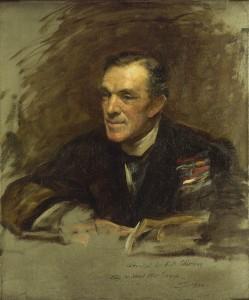
Admiral Sir Frederick Doveton Sturdee, the British commander-in-chief at the Battle of the Falkland Islands, by Sir Arthur Stockdale Cope, oil on canvas, 1920. (BHC3042)
Additional warships commanded by Admiral Sturdee were immediately dispatched to the South Atlantic to redress the balance. On board one of them, HMS Kent, Lieutenant J. K. Whittaker recorded the everyday events of a voyage whose frequent monotony and tedium belied its deadly purpose. Taking on board provisions en route was a gala day. ‘People cannot imagine what a delight to us it was to get fresh meat…our menu consisted of salt pork and peas pudding one day, and stringy bully beef with dried peas or beans the next…the smell of the salt pork with the porker’s bristles still sticking out [was] quite enough for me’. Another source of diversion was the ‘Kent Kronical’, the ship’s monthly magazine. The ‘celebrity page’ of its 1 December issue profiled the vessel’s gunnery officer, listing his recreations as: ‘watching footer matches, breaking targets, ranging guns, shooting, knitting, marbles and ping pong’. Spoof advertisements included one for ‘Pickthorn’s Popular Painless Panacea’, asking, ‘Do you suffer? Pains in the Pantry, shortness of the Canteen, Coals, Catarrh, Confinement, and that Censored Feeling’.
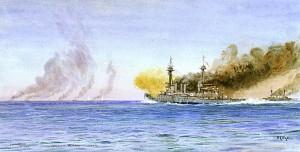
Admiral Sturdee’s ships pursuing the German squadron at the start of the Battle of the Falkland Islands, watercolour by W. L. Wyllie, c. 1915–18. (PAF 2120)
All such amusements came to an abrupt end on 8 December when Sturdee’s force of battle-cruisers and cruisers met von Spee’s ships at the Falkland Islands. A short and brutal battle followed in which four German warships were sunk with little cost to the British. Von Spee and both his sons were among those killed. For Lieutenant Whittaker those hours left an indelible impression of close-range shellfire smashing into the cruiser Nürnberg. His conviction that ‘her decks must simply have been a shambles’ was confirmed when HMS Kent pulled twelve survivors from the bone-chilling water. ‘[They] were all taken below’, he continued, ‘where artificial respiration was resorted to…and the look of terror on their faces when they regained consciousness was truly horrible, a sure proof of what they had suffered…under our fire’. Sylvester Pawley in HMS Glasgow, drew another lesson from the battle. ‘A sudden blast like action in war develops qualities for good or evil, pity or contempt, and those who before that severe test would be dismissed as weak and helpless suddenly display qualities of greatness. On the other hand men in whom you have had every confidence and are the embodiment of pluck and courage become dejected and hysterical’.
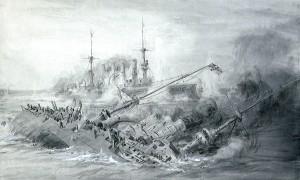
The destruction of SMS Scharnhorst and Gneisenau at the Battle of the Falkland Islands, by W. L. Wyllie, 1915–18. (PAF 0922)
The year that was ending had seen the Royal Navy in action around the globe. In early 1915, HMS Kent continued to pursue the sole surviving German warship from the Battle of the Falkland Islands, SMS Dresden, until it was cornered and scuttled in March. However, the focus for the naval war, and for its personnel, was by then shifting to the North Sea and also to the Mediterranean, where the Gallipoli campaign was about to explode.
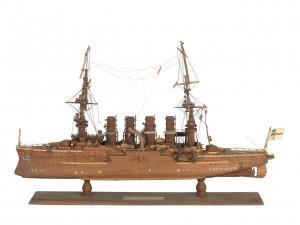
Model of SMS Scharnhorst made in captivity by German prisoners of war from the Battle of the Falkland Islands, 1915. (SLR1371)
The battle was the basis for one of the finest films of the British silent era. We're holding a special screening of this newly restored film where Quintin will be joined by BFI's silent film curator for a public discussion.